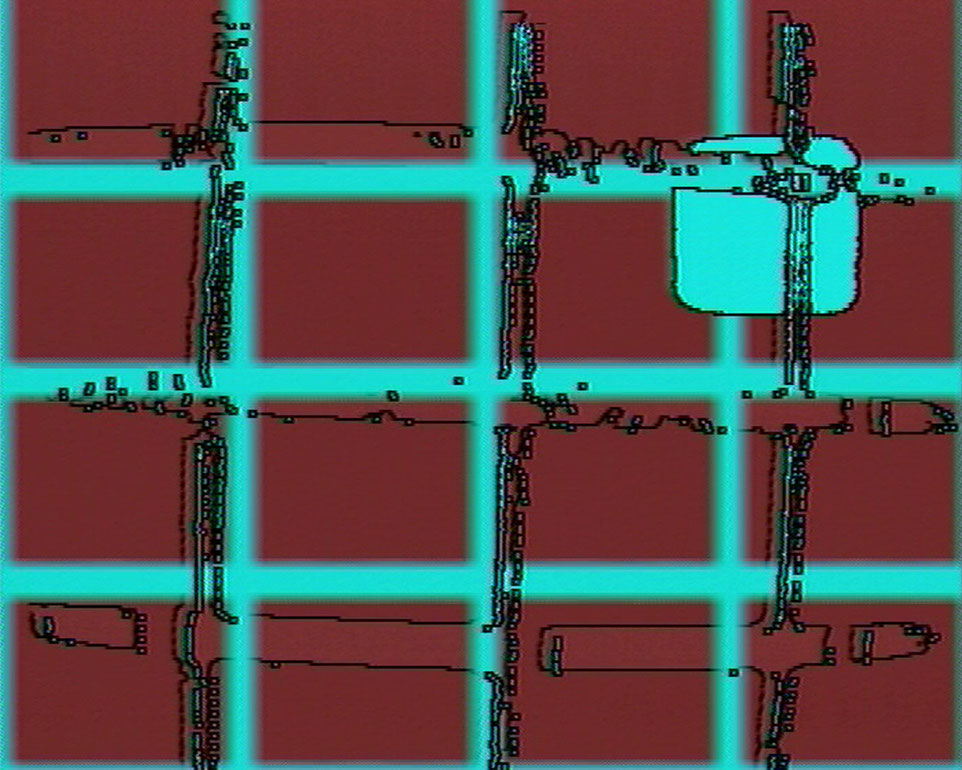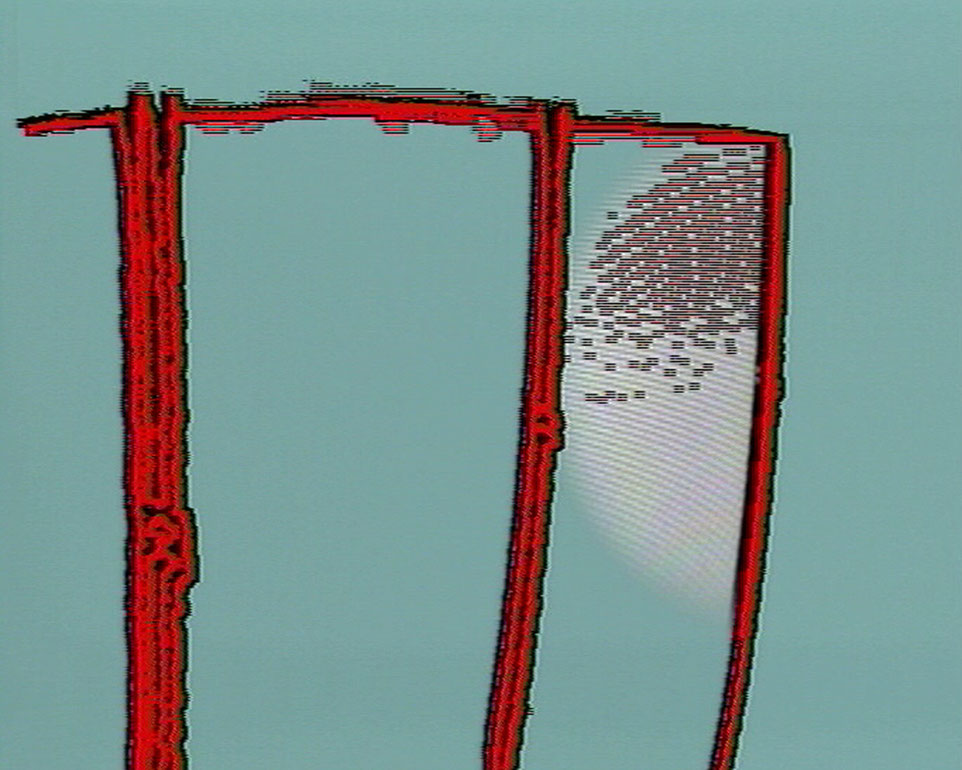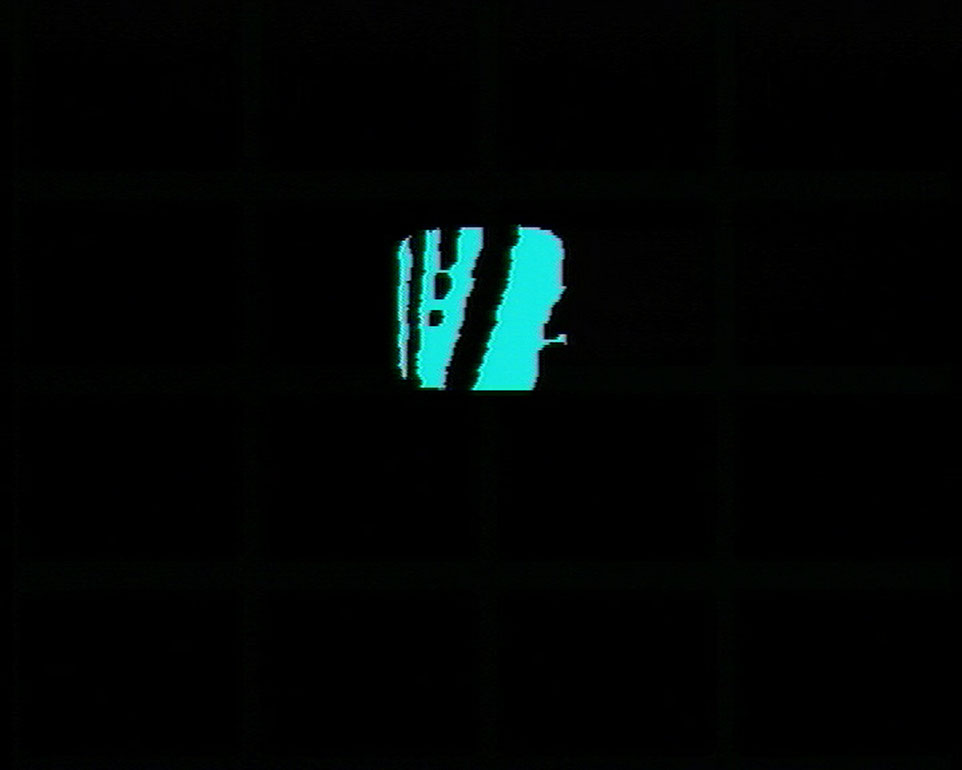i/o
Deviating from the dogma of typical video clips, the images are given sufficient time to form, to deform and finally to reach their own conclusion without lapsing into other dogmas, such as that of slowness. The circuit board shown in place of the title enlarges upon the spectrum of possibilities for mutual influence: A triptych is the result.
a) flies
An image which is reminiscent of Helmut Federle in its constructivist rigidity appears. A white rectangle with fuzzy borders is situated on a green background in the pictures center, in front of that an organic polygon with a shimmering black outline. The polygon begins to move extremely slowly and then to dance around the static white field. Accompanied by unobtrusive sounds, the form in the foreground mutates and disintegrates while the range of its action becomes easier to recognize: a square. A compact geometric shape turns into a field which, as it moves faster and faster, apparently wants to tell a story, like a comic. It finally ends up as a monochrome red square on the backgrounds white field.
b) circles
A circle provides the starting point for these feedback improvisations. In contrast to the first part speed, variety and opulence dominate here. Arranged around the central figure, optical feedback oscillates in a deep red without overtaxing the basic motif.
c) glyphs
The black void at the conclusion of the second part develops into a shimmering rectangular figure which eventually assumes the function of a cursor. A grid slowly crystallizes behind it. Their interaction leads to the disintegration of both elements; they become patterns of a sort Daniel Libeskind could not have made more beautiful even in his best years.
(Werner Korn)
translation: Steve Wilder
i/o (texte français)
Rompant avec le dogme du « clip », la vidéo donne aux images le temps de se former, de se déformer, puis darriver par elles-mêmes à une conclusion, sans pour autant se soumettre à dautres dogmes, comme par exemple celui de la lenteur à tout prix. Inséré en guise de titre, un schéma de câblage illustre léventail des possibilités dinfluence réciproque : un triptyque sen dégage.
a) flies
Une « image » apparaît : par sa rigueur constructiviste, elle fait penser à un tableau de Helmut Federle. Un rectangle central, blanc, aux bords flous, placé sur un fond vert, par devant un polygone organique aux contours noirs tremblotants. Très lentement, le polygone amorce un mouvement, se mettant à danser autour de lespace blanc immobile. Portée par des sons discrets, la forme du premier plan se métamorphose, se décompose tandis que son rayon daction acquiert une apparence de plus en plus nette : celle dun carré. Un objet géométrique compact se transforme en un espace qui, avec des mouvements de plus en plus rapides, semble vouloir raconter une histoire à la façon dun dessin animé, pour finalement finir en carré rouge monochrome devant le rectangle blanc à larrière plan.
b) circles
Le cercle constitue le point de départ dimprovisations fonctionnant sur le principe du feedback. A la différence de la première partie, ici cest la vitesse, la diversité et lopulence qui dominent. Agencés autour de ce centre, des motifs réinjectés dun rouge vif oscillent sans altérer le motif de base.
c) glyphs
Du vide noir qui clôt la deuxième partie naît une figure rectangulaire, vacillante, qui va bientôt adopter la fonction dun curseur. Derrière elle, une grille apparaît petit à petit. Les interactions provoquent finalement la transformation des deux éléments en séquences répétitives qui nauraient pas fait honte à Daniel Libeskind dans ses meilleures années.
(Werner Korn)
Traduction: Françoise Guiguet
i/o
2003
Austria
30 min



